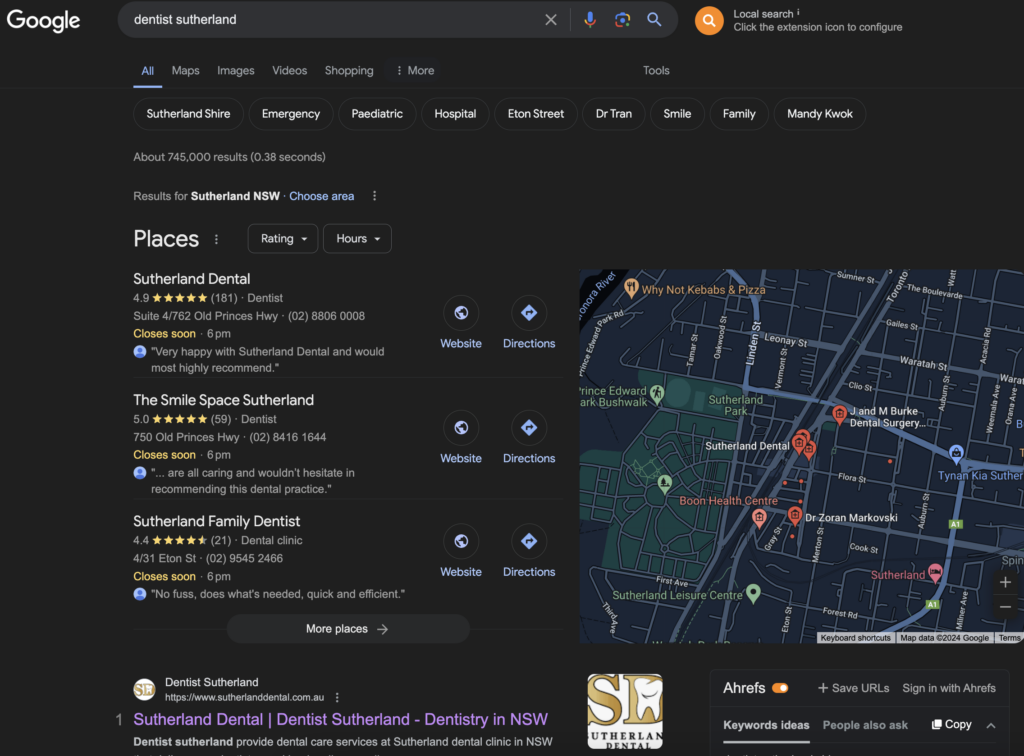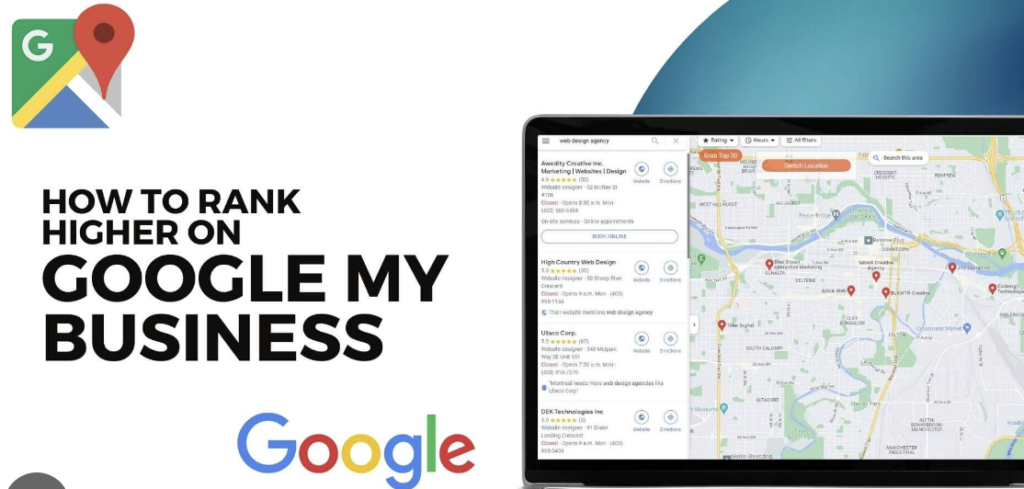Mastering SEO: A Comprehensive Guide So You Can Do SEO
Understanding how to do SEO requires patience and lots of research because Google Algorithms change and these algorithm’s influence keyword rankings, impressions and ultimately generating new patients. Search Engine Optimisation (SEO) has become a crucial digital marketing strategy. Whether you’re a small business owner, a blogger, or an entrepreneur, understanding and implementing effective SEO strategies can significantly enhance your online presence and drive organic traffic to your website.
Allocating between 10 hours per week depending on the level of competition for keywords you are targeting is recommended. This will be made up of keyword research, competitor analysis, content topic analysis, content creation, link building and optimising the website including plugins, page speed and much more.
In this how to do SEO guide, we’ll delve into the essentials of how to do SEO, covering everything from conducting an SEO audit to optimising for local search and implementing an SEO strategy for your Google My Business Profile.

How to Do an SEO Audit
Conducting a thorough SEO audit is the foundation of any successful SEO strategy. It involves assessing your website’s performance, identifying areas for improvement, and devising a plan to optimise its visibility in search engine results. Here’s a step-by-step guide to performing an SEO audit:
1. Evaluate On-Page SEO Elements:
- Keywords Analysis: Review the keywords your website is currently ranking for and identify opportunities for targeting high-value keywords related to your niche.
- Meta Tags Optimisation: Ensure that meta titles, meta descriptions, and header tags accurately reflect the content of each page and contain relevant keywords.
- Content Quality: Assess the quality and relevance of your website’s content. Is it engaging, informative, and optimised for target keywords?
- Internal Linking Structure: Check for broken links and ensure a logical internal linking structure that facilitates navigation for both users and search engines.
2. Assess Technical SEO Factors:
- Site Speed: Evaluate your website’s loading speed using tools like Google PageSpeed Insights and address any issues that may be causing slow performance.
- Mobile Friendliness: Verify that your website is mobile-responsive and provides an optimal user experience across various devices.
- Crawlability and Indexability: Ensure that search engine bots can crawl and index your website effectively by addressing any issues with robots.txt, sitemaps, and crawl errors.
- Site Architecture: Review your website’s hierarchy and URL structure to ensure it is organised and easily navigable.
3. Analyse Off-Page SEO Factors:
- Backlink Profile: Examine the quality and quantity of backlinks pointing to your website. Disavow toxic links and seek opportunities to earn high-quality backlinks from authoritative sources.
- Social Signals: Assess your brand’s presence on social media platforms and its impact on your website’s visibility and engagement.
- Local Citations: Check the consistency and accuracy of your business information across online directories and local listings.
4. Utilise SEO Tools:
- Google Search Console: Leverage this free tool to monitor your website’s performance in Google search results, identify indexing issues, and receive alerts about potential SEO issues.
- Google Analytics: Analyse website traffic, user behaviour, and conversion metrics to gain insights into the effectiveness of your SEO efforts.
- SEMrush, Ahrefs, Moz: These comprehensive tools make it easier to understand how to do SEO and provide valuable insights into keyword research, backlink analysis, competitor research, and more.
How to Do Local SEO
Learning how to do Local SEO is essential for businesses targeting a geographically specific audience. Whether you run a brick-and-mortar store or offer services to local patients, optimising for local search can help you attract nearby customers. Follow these steps to enhance your local presence with this how to do SEO guide:

1. Claim Your Google My Business Listing:
- Create or Claim Your Listing: Visit Google My Business and claim your business listing if it already exists. Otherwise, create a new listing and provide accurate and up-to-date information about your business.
- Optimise Your Profile: Fill out all the required fields, including business name, address, phone number (NAP), website URL, business hours, and categories.
- Add Photos and Videos: Upload high-quality images and videos that showcase your products, services, and premises to enhance your listing’s appeal.
- Collect Reviews: Encourage satisfied customers to leave positive reviews on your Google My Business listing. Respond promptly to reviews, both positive and negative, to demonstrate your commitment to customer satisfaction.
2. Optimise for Local Keywords:
- Keyword Research: Identify local keywords relevant to your business, including location-based terms such as city names, neighbourhoods, or landmarks.
- Localised Content: Create location-specific content, such as blog posts, landing pages, and service pages, that address the needs and interests of your local audience.
3. Build Local Citations:
- Submit to Online Directories: List your business on popular online directories and citation sites such as Yelp, Yellow Pages, and Bing Places for Business.
- Consistent NAP Information: Ensure that your business name, address, and phone number are consistent across all online platforms and directories.
4. Local Link Building:
- Partner with Local Businesses: Forge partnerships with complementary local businesses or organisations and explore opportunities for collaborative marketing efforts and link exchanges.
- Sponsor Local Events or Charities: Get involved in community events, sponsorships, or charitable initiatives to boost your brand visibility and earn local backlinks.
How to Do SEO for Google My Business
Practicing how to do SEO for Google My Business (GMB) is a powerful tool for enhancing your online presence and attracting local customers. Follow these steps to optimise your GMB listing for better visibility and engagement:

1. Complete Your Profile:
- Provide Accurate Information: Ensure that all the information in your GMB profile, including business name, address, phone number, website URL, and business hours, is accurate and up to date.
- Select Relevant Categories: Choose the most relevant categories for your business to help Google understand what your business offers and improve its chances of appearing in relevant search results.
2. Optimise Your Listing:
- Add Compelling Descriptions: Write a concise and compelling business description that highlights your unique selling points and key offerings.
- Upload High-Quality Photos and Videos: Showcase your products, services, and premises with high-quality images and videos that capture the attention of potential customers.
3. Encourage Customer Interaction:
- Respond to Reviews: Monitor and respond to customer reviews promptly, thanking customers for positive feedback and addressing any concerns or issues raised in negative reviews.
- Enable Messaging: Enable messaging features to allow customers to communicate with your business directly through your GMB listing.
4. Utilise GMB Features:
- Post Regular Updates: Take advantage of the Posts feature to share news, offers, events, and other updates with your audience directly on your GMB listing.
- Use Insights to Track Performance: Monitor GMB Insights to track how customers find and interact with your business listing and use this data to refine your local SEO strategy.
In conclusion, mastering how to do SEO is crucial for improving your website’s visibility, attracting organic traffic, and growing your business online. By conducting regular SEO audits, optimising for local search, and leveraging Google My Business effectively, you can enhance your online presence, connect with your target audience, and achieve sustainable growth in the digital landscape. If you are looking for healthcare SEO or Dental SEO strategies then you can organise a free SEO audit from our dental marketing team.



